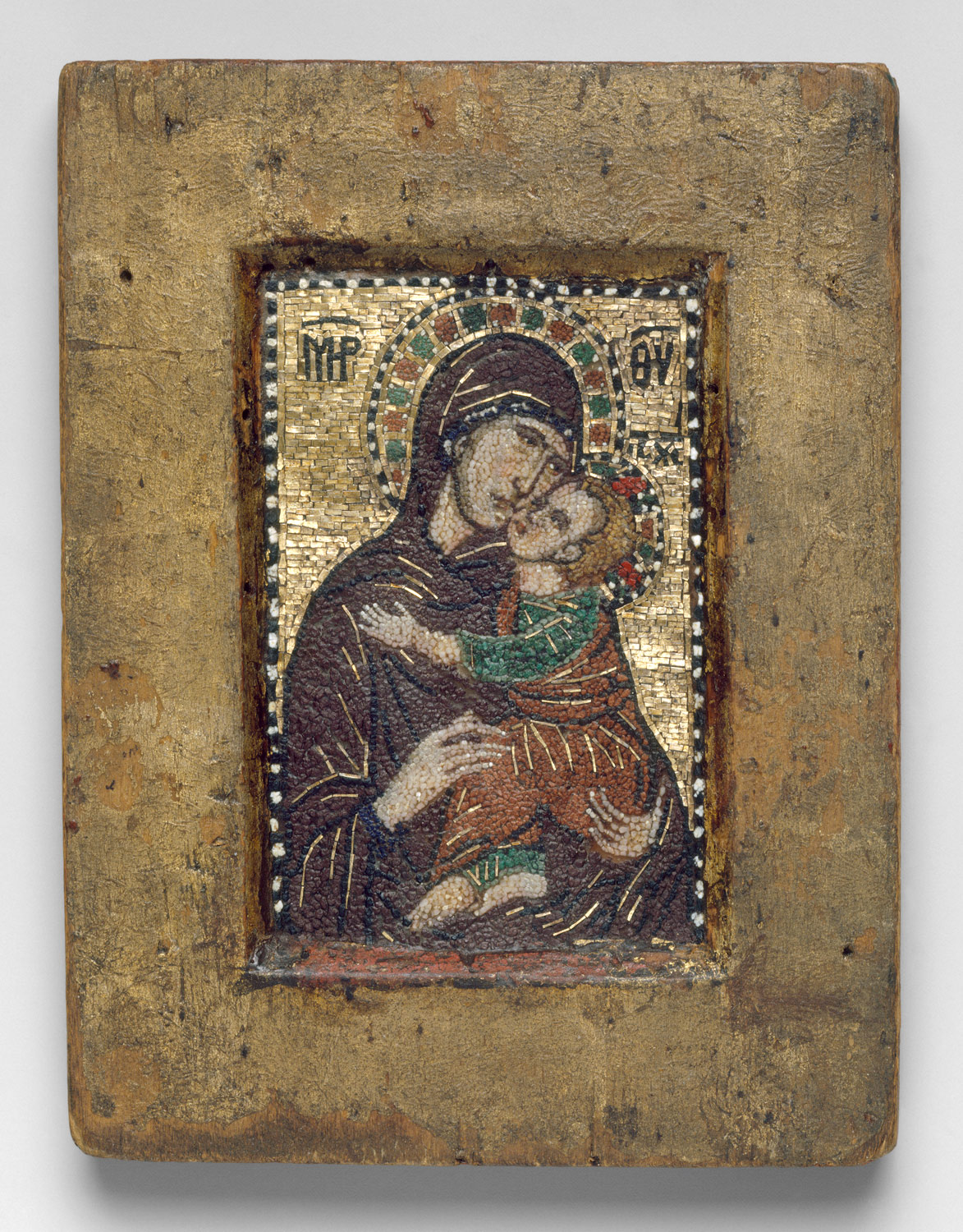Byzantine Icons: 1, 2
Virgin of Compassion, "Virgin Eleousa".

From wikipedia.
Symbolism in icons
In the icons of Eastern Orthodoxy, and of the Early Medieval West, very little room is made for artistic license. Almost everything within the image has a symbolic aspect. Christ, the saints, and the angels all have halos. Angels (and often John the Baptist) have wings because they are messengers. Figures have consistent facial appearances, hold attributes personal to them, and use a few conventional poses.
Colour too plays an important role. Gold represents the radiance of Heaven; red, divine life. Blue is the color of human life, white is the uncreated essence of God, only used for resurrection and transfiguration of Christ. If you look at icons of Jesus and Mary: Jesus wears red undergarment with a blue outer garment (God become Human) and Mary wears a blue undergarment with a red overgarment (human was granted gifts by God), thus the doctrine of deification is conveyed by icons. Letters are symbols too. Most icons incorporate some calligraphic text naming the person or event depicted. Even this is often presented in a stylized manner.
Still life
Metonyny
Asyndeton